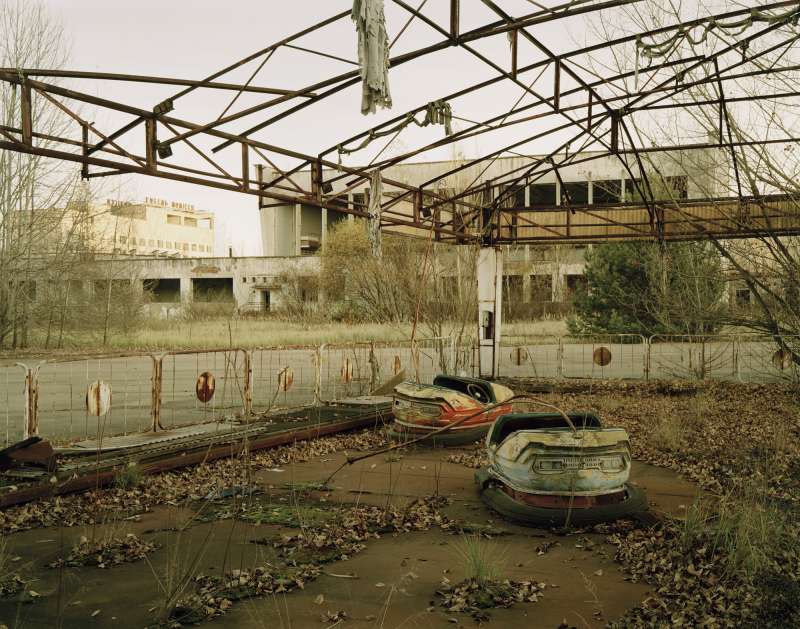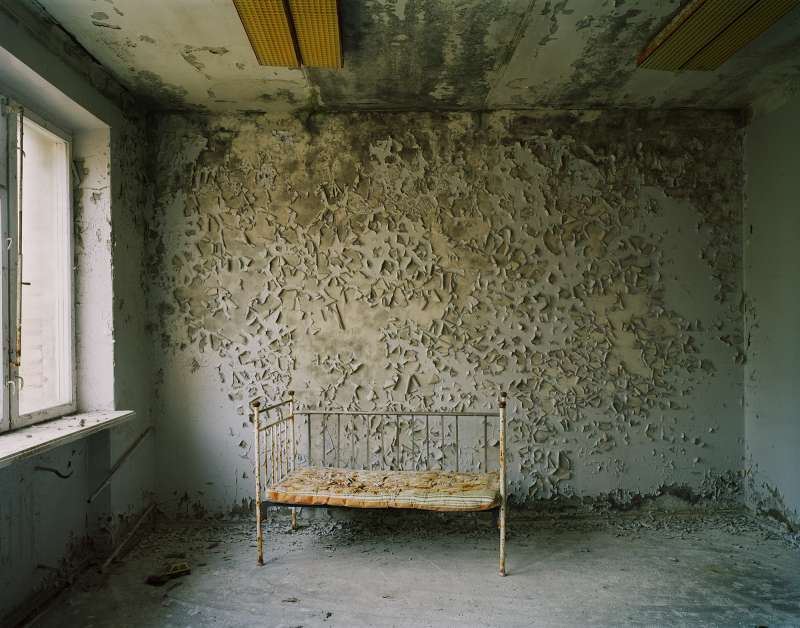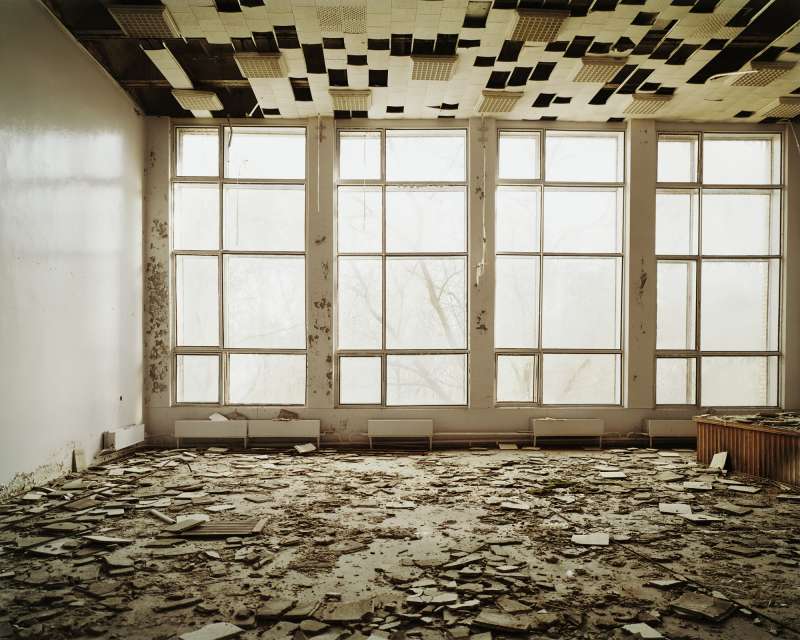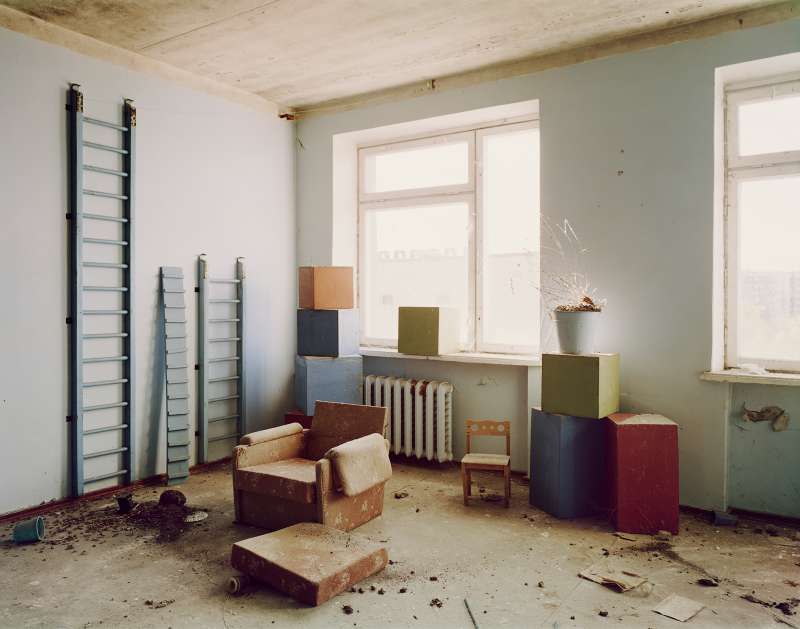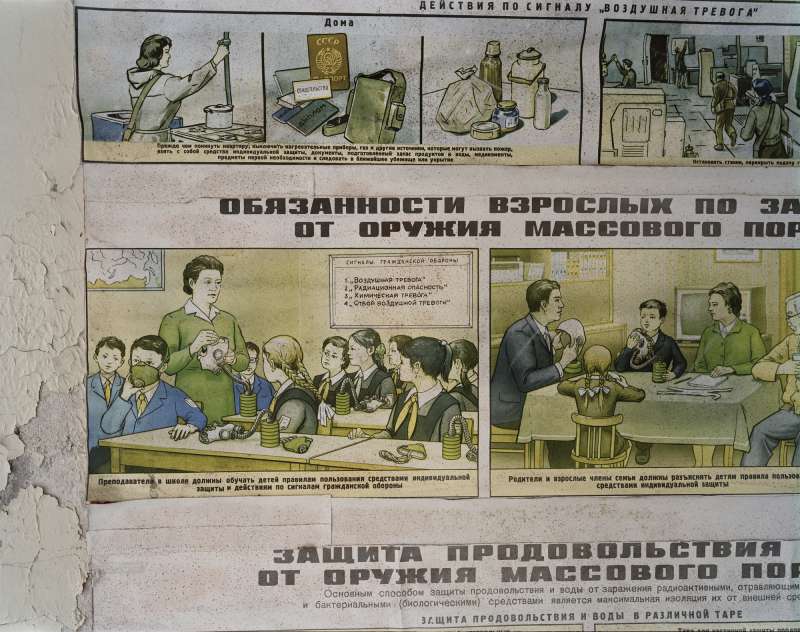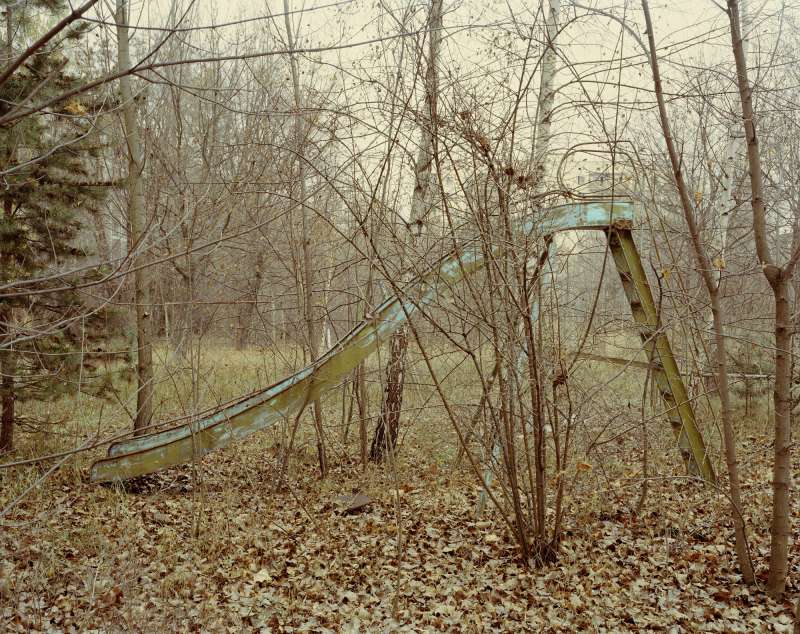In 1986 a nuclear reactor exploded in Pripyat, a model Soviet town near Chernobyl. The 40,000 inhabitants were evacuated and dispersed. The large radioactive area was cordoned off indefinitely. In 2004 Nadav Kander gained access as an artist. He photographed the hastily abandoned apartments, schools, hospitals and offices. The silence and stillness of the scenes devoid of human life was profound, but their presence was still palpable.
Kander’s camera appears to stand and stare at this paused, post-traumatic world, like a witness. The only sound came from his Geiger counter, monitoring the invisible radioactivity that will be present for hundreds of years. Nature encroaches and all that is manmade is slowly being consumed.
David Campany, 2024
I gained access as an artist to visit Pripyat, photographing the deserted spaces in what was once a model Soviet City.
Home to more than 40,000 people, the apartments, schools and hospitals that were hastily left following the controversial evacuation are stark reminders of past lives, leaving a disturbing sense of quiet. An uneasiness that I had never previously experienced.
There is a great beauty in a very real way to be found as the poignancy of human suffering almost hangs in the air. I found myself with a familiar feeling; best described as the feeling when walking through an overgrown cemetery on a drizzly day, but what I was looking at was far from familiar.
Having grown up with stories of relations of mine including my Father with his family that were suddenly evacuated during the second world war, I could not help but feel quite profoundly shocked as well and at the same time wonder what it must have felt like to suddenly leave your home and be transported to an unknown destination, suspecting that the near future would probably bring severe ill health due to being exposed to large doses of radiation. Little is known about the radio-active affects on the people of this city as the population were dispersed all over Russia. If there was a gathering of data by the government, it was never reported.
Nadav Kander, 2004
Half Life – The Chernobyl Disaster
Half Life – The Chernobyl Disaster



